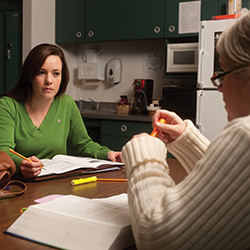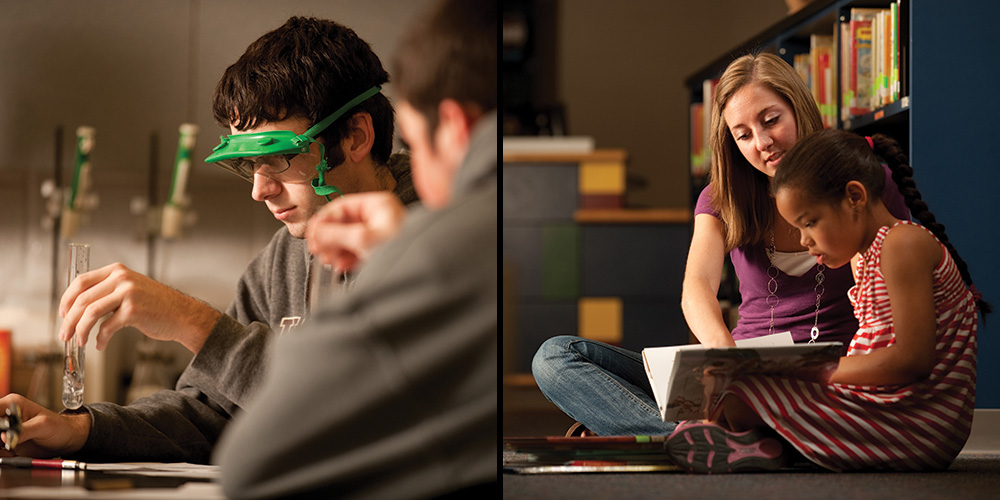Hesston College started using nationally normed surveys in 2006, and the results have trended upward so much the college now reports the highest score nationwide in some areas.
Since there have been no rankings of two-year schools since the college’s number 2 honor from Washington Monthly in 2010, Hesston can’t be considered number 1, but with the survey results higher now than from the results that got the ranking, as President Keim says, the college is a solid “two plus.”
This place of success came from significant focused work, including a lot of trial and error.
When survey results come in, the process starts with a team made up of Vice President of Academics Sandra Zerger and institutional researchers (math faculty member Nelson Kilmer and chair of the nursing department Bonnie (Kauffman) Ac65, ’67 Sowers) who begin looking at the results, comparing them to previous years and analyzing them. Zerger, Kilmer and Sowers then lead faculty and staff in understanding the results and how to work with them.

The steps toward improvement are calculated and intentional at both a collective and individual level. The Dean’s office and faculty members collaboratively discuss the survey data, how it affects them and their courses and how to respond. Faculty members attend on-campus in-service workshops and off-campus conferences geared specifically toward areas needing improvement. They tweak their curricula to find what improves student learning. They keep current on social and technological trends to meet students where they are.
Student satisfaction is broader than academics. Other areas also give careful attention to meeting student needs. From planning campus activities to dealing with disputes fairly to providing variety in meals and adequate living spaces, every faculty and staff member works for the good of the students.
Donors, alumni and friends play a part too. Financial support helps to carry out projects and keep spaces and equipment updated. Prayers and kind words and memories are energy giving, sustaining and hopeful.
The Hesston College community – both on-campus and off – just doing what is necessary to fulfill the mission statement of educating and nurturing each student is what makes for outstanding results and satisfied students.


